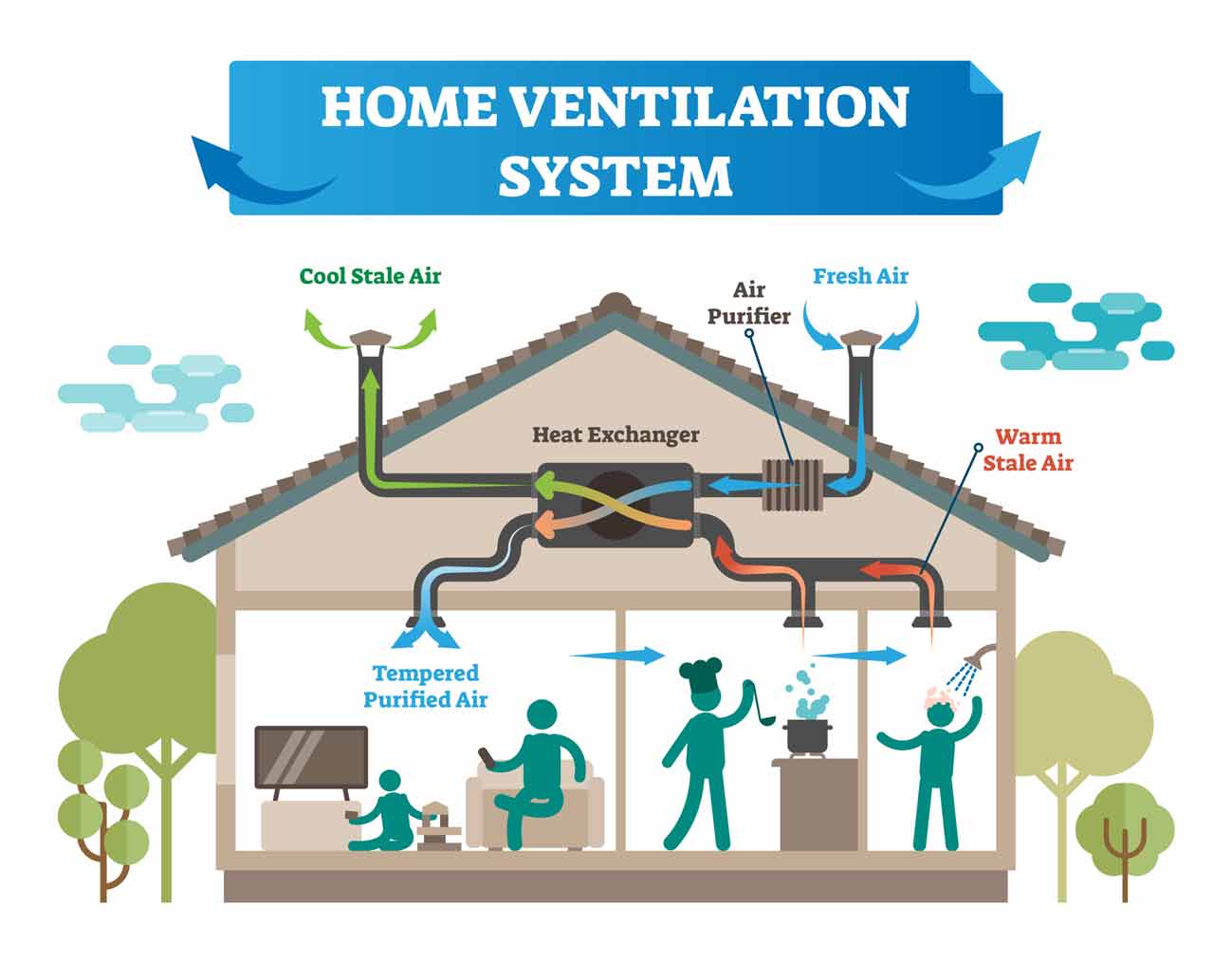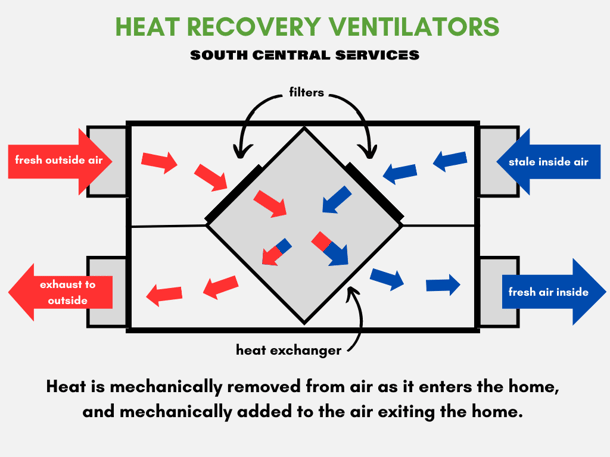How Does HRV and Its Role in Homes
Wiki Article
Checking out the Perks of Heat Recovery Ventilation for Energy Performance in Residences
Heat Recovery Ventilation (HRV) systems offer house owners a useful technique to enhancing energy performance. By recovering warmth from outward bound air, these systems can significantly reduce cooling and heating prices. Furthermore, they provide a stable supply of fresh air, enhancing indoor air quality and comfort degrees. As home owners think about lasting options, understanding the nuances of HRV systems comes to be significantly vital. What elements should one examine prior to making such a financial investment?Understanding Heat Recovery Ventilation Equipments

Exactly How HRV Boosts Indoor Air Quality

Energy Savings: The Financial Advantages of HRV
Taking full advantage of energy effectiveness, heat recovery ventilation (HRV) systems offer considerable financial advantages for homeowners. By recuperating and recycling warmth from exhaust air, HRVs substantially minimize cooling and heating expenses. This innovation can bring about power cost savings of as much as 30%, relying on climate and usage patterns. House owners typically see reduced utility bills soon after setup, making HRVs a financially smart financial investment with time. Additionally, lots of areas provide incentives or refunds for energy-efficient upgrades, even more improving the monetary charm. As power prices remain to rise, the cost-effectiveness of HRVs comes to be progressively clear. In general, the consolidation of HRV systems not only promotes power efficiency however also adds to lasting economic savings for families.The Environmental Effect of Heat Recovery Ventilation
A significant ecological advantage of heat recovery ventilation (HRV) systems depends on their ability to decrease general energy intake. By reclaiming heat from exhaust air and transferring it to incoming fresh air, HRV systems reduce the demand for energy-intensive home heating and cooling techniques. This reduction in power need adds to lower greenhouse gas discharges, as less fossil fuel is HRV Heat Recovery Ventilation called for to maintain comfortable interior temperature levels. Furthermore, HRV systems enhance indoor air high quality by successfully trading stagnant air with fresh exterior air, minimizing reliance on mechanical air conditioning systems that can hurt the environment. On the whole, the execution of HRV systems sustains lasting living practices and aligns with international initiatives to combat environment adjustment by promoting energy efficiency in residential settings.
Choosing the Right HRV System for Your Home
How can homeowners assure they choose the right heat recovery ventilation (HRV) system for their requirements? Initially, they must evaluate their home's dimension and design, as these variables affect airflow demands. Next off, evaluating the system's effectiveness scores is crucial, as greater ratings suggest better efficiency and power cost savings. Property owners must also consider installation and upkeep costs, comparing different brands and designs for value. In addition, it is essential to examine noise degrees, as some systems run even more quietly than others. Consulting with cooling and heating experts can offer tailored suggestions based upon specific home problems. Ultimately, analyzing customer evaluations and service warranties can assist in making an informed decision, making certain that the selected HRV system successfully enhances interior air high quality and power efficiency.Frequently Asked Concerns

Just how Commonly Should I Tidy or Keep My HRV System?
The regularity of cleaning or keeping a warm healing air flow (HRV) system typically depends upon use and environmental variables. Normally, it is advisable to execute maintenance every 6 months to ensure peak performance and air high quality.
Can HRV Equipments Help In Reducing Moisture Levels Inside?
HRV systems can efficiently reduce interior moisture levels by exchanging stale, moist air with fresh, drier air from outside. HRV Heat Recovery Ventilation. This process aids preserve a balanced interior atmosphere, boosting convenience and avoiding moisture-related issues
What Is the Life-span of a Common HRV System?
The life expectancy of a typical heat recovery ventilation (HRV) system varies, usually lasting in between 10 to 15 years. Regular maintenance can expand its efficiency and operational life, guaranteeing peak efficiency throughout its usage duration.Exist Any Noise Worry About HRV Solutions?
Noise interest in HRV systems can develop, particularly from follower procedure. Several modern-day systems are developed to decrease audio degrees, ensuring they run quietly while preserving efficiency, which resolves possible disruptions in living environments.Can I Set Up an HRV System Myself, or Do I Need an Expert?
The specific contemplated whether to mount the heat recovery ventilation (HRV) system personally or work with a specialist. Generally, while do it yourself installment is possible, knowledge assurances proper performance and conformity with local building regulations, enhancing system efficiency.Report this wiki page